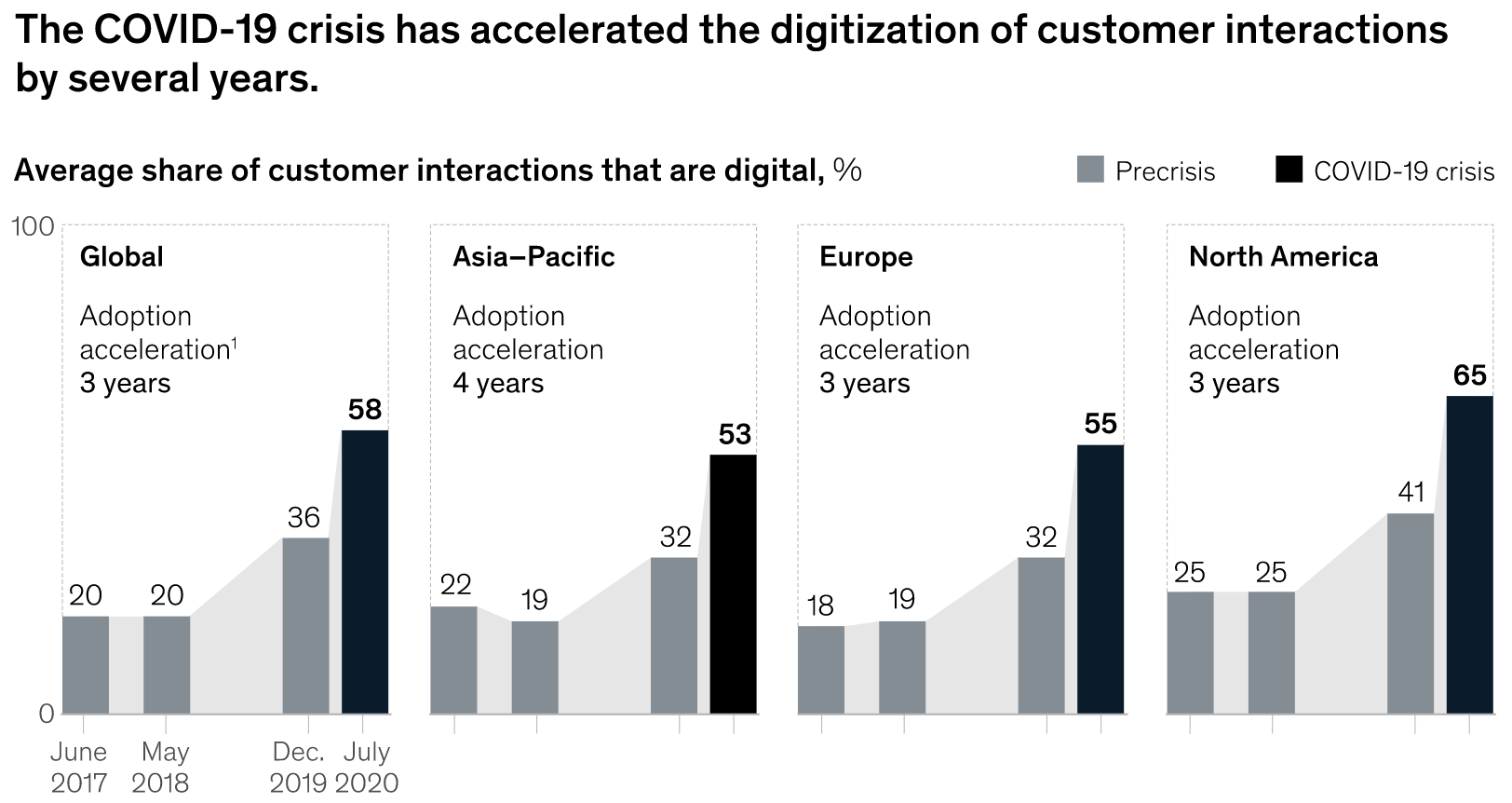Over the past couple of years, all of the research around the impacts of Covid and new ways of interacting, point toward the dramatic rise of digital channels. Whether you reference the McKinsey Global Digital Sentiments Insight Survey, Forrester or Gartner research, the race to digital has occurred and is continuing.

Contact Centre Challenges
Contact centres are facing new challenges as we continue to move to a digital-first future. In the past, there was a multitude of articles indicating the demise of the contact centre as a result of new technologies; this has not happened. The increasing use of technology and AI to drive self-serve and automated solutions means that our contact centres are still just as important but are changing, and changing fast. The new challenges arising are many and varied. As contact centre managers, we need to understand these challenges and prepare our people, processes, and technology to meet them.
As we move to a self-service, automated customer service model that allows customers to interact with us when and where they choose to, contact centre interactions are increasingly moving from a traditional voice channel to the written word. In addition, the interactions we are facing are more complex, technical and often emotionally charged, leading to the need for a different level of skill and capability.
What are some of the challenges, and how do we respond?
Chat, messaging, and email – the written word
As interactions become focused on self-service, the use of the web, apps and Chatbots to interact with customers is taking over as the first contact point. Unless your voice channel is part of your value proposition, it is likely that these tools now handle the simple transactions of updating details, paying bills and, in the case of AI and Chatbots, answering a range of general enquiries. When customers need to contact you for additional support, it is often through a chat or messaging (if the Chatbot cannot answer the enquiry) or through a ‘contact us’ form from the website that arrives as an email.
For your contact centre, this means you need to be ready to engage customers through these channels and therefore need to be prepared to modify a whole raft of processes you used to have in place to support voice channels.
As a starting point, you need to have agents who are skilled in responding and engaging customers using the written word. We cannot assume that an agent who is great on the phone will automatically adapt, enjoy or even have the ability to move to a chat or email channel. Some of your team will enjoy the new environment, but others will require upskilling to be able to convey your brand and persona in the written word. You may need to do some retraining and, in some cases, look for different resources to support these channels.
How you create the right tone and manner, show empathy and provide resolution needs to be conveyed in your training, work instructions and templates. This is not simple, and a poorly written response is a bad customer experience and one that is retained in hard copy by the customer.
Increasing need for resolution skill sets
As digital solutions replace a range of simple transaction types, your contact centre will manage more complex enquiries. This requires a rethink of the skills and aptitudes you need for your front-line teams. Underpinning this is an increased requirement for your agents to think creatively, focusing on the resolution of issues combined with an ability to be flexible across channel types.
Without a doubt, you need to spend more time training and coaching your team to help them succeed in this world. Your quality programs need to be revised, and your knowledge management tools must ensure a consistent and accurate customer experience by providing agents with access to easy to understand, searchable and relevant information to resolve customer enquiries. Finally, your recruitment profile may need to change: what attributes and skills does your future workforce need to succeed and thrive in a digital-first world?
Technical support
As your customers engage with you through your website, an app or a chatbot, you will need to provide increased technical assistance to your customers. Often this is as simple as password resets (if not automated) but can involve providing explanations for how to set up tools, clear cookies/caches or troubleshoot why a customer cannot resolve an issue online. You may provide co-browsing capabilities or simply technical how-to guides to support these enquiries.
What is a new challenge is helping your agents to become experts in these transaction types. Many of your existing resources, although experts in your product or processes, may lack the skills to understand and engage in technical support enquiries. Again, your agent profile and recruitment may need to change radically in this new world.
The changing landscape
One thing is certain: channels and customer interactions will continually evolve, expanding from traditional voice to a range of platforms and engagement strategies. For our people and our contact centres, the ability to adapt, multi-skill and thrive in a multi-dimensional engagement model will be the key to future success.
Is it time to review your capabilities across each of your channels to build a future capable team and operation?
